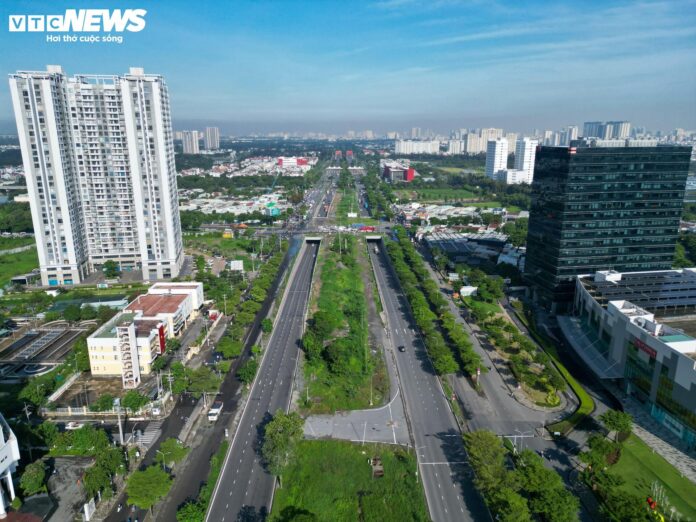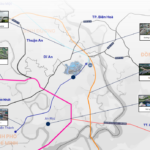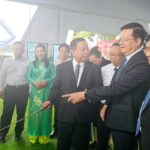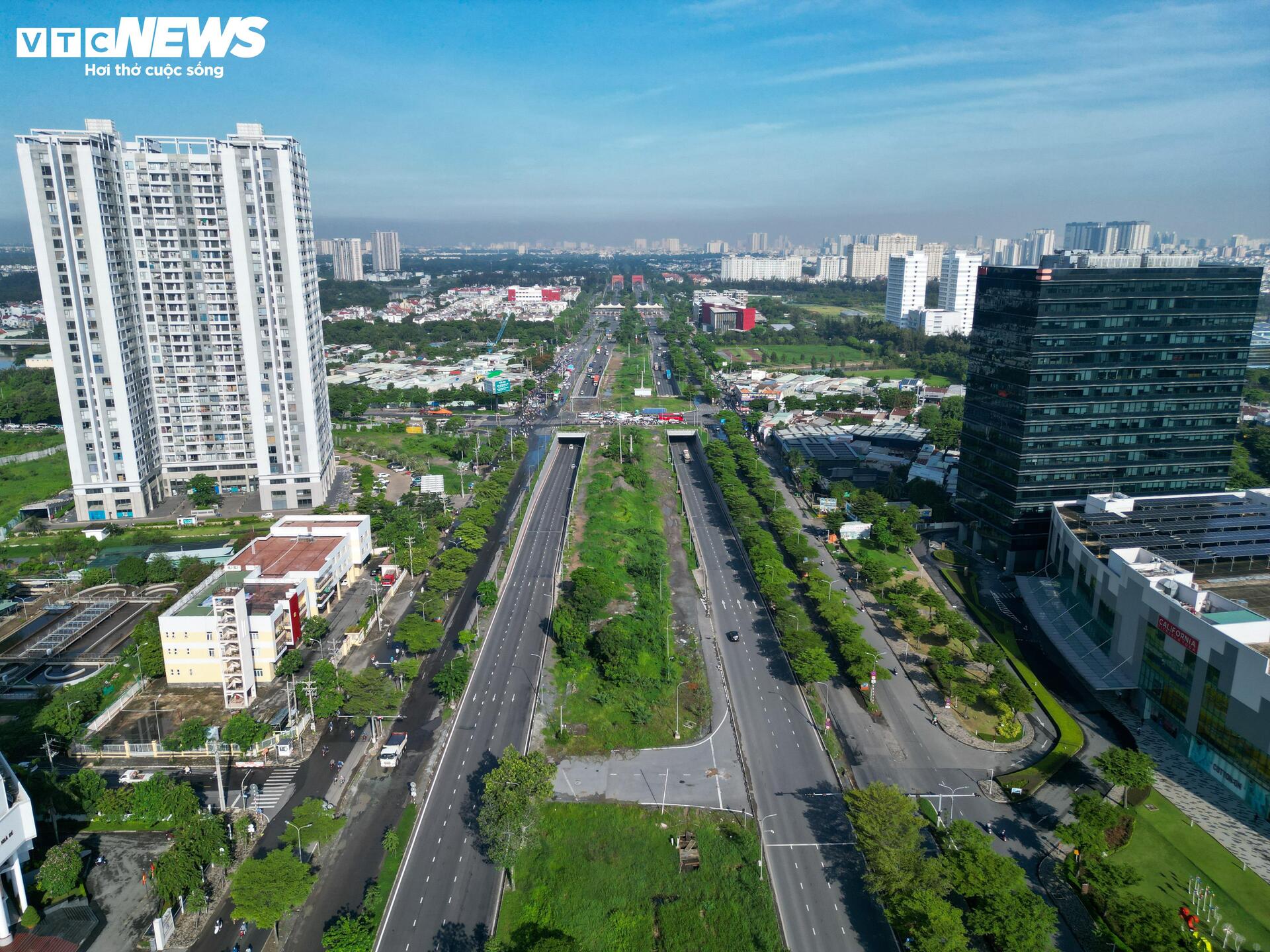
In accordance with the directives of Chairman of Ho Chi Minh City People’s Committee, Nguyen Van Duoc, regarding the acceleration of infrastructure development for regional connectivity, the city’s Department of Construction is currently studying the Phu My 2 Bridge-Road project. This strategic transportation route will connect the urban area of Southern Saigon with Long Thanh International Airport in Dong Nai province.
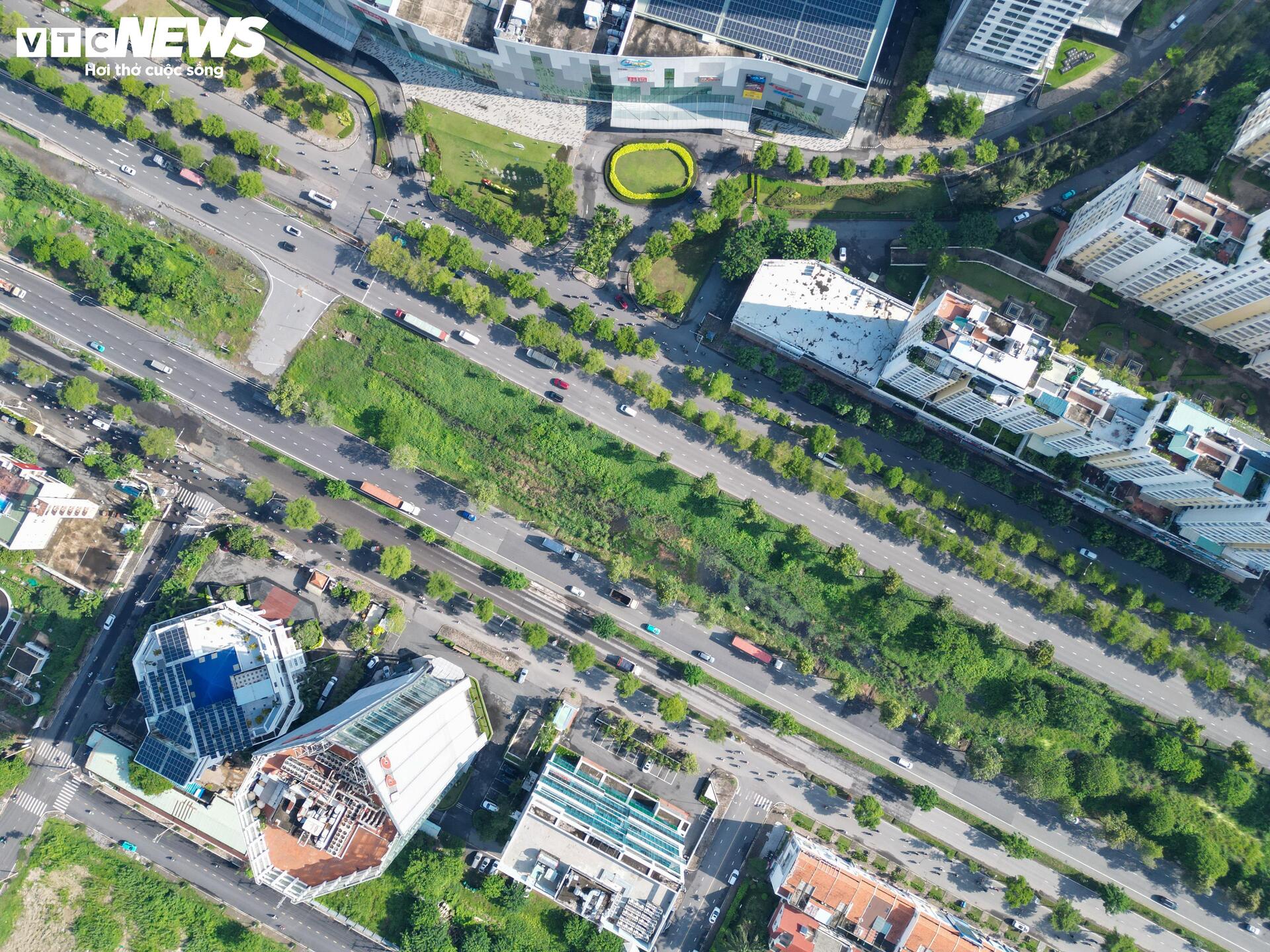
According to preliminary studies, the Phu My 2 Bridge-Road project will be approximately 16.7 km long, featuring six lanes for motor vehicles and two lanes for non-motorized vehicles. The total estimated investment for this project is 21,484 billion VND.

The route originates from Nguyen Huu Tho Street in District 7, traversing through Hoang Quoc Viet Street, Dao Tri Street, crossing the Dong Nai River, and connecting with Lien Cang Street and 25C Street in Nhon Trach district, Dong Nai province.
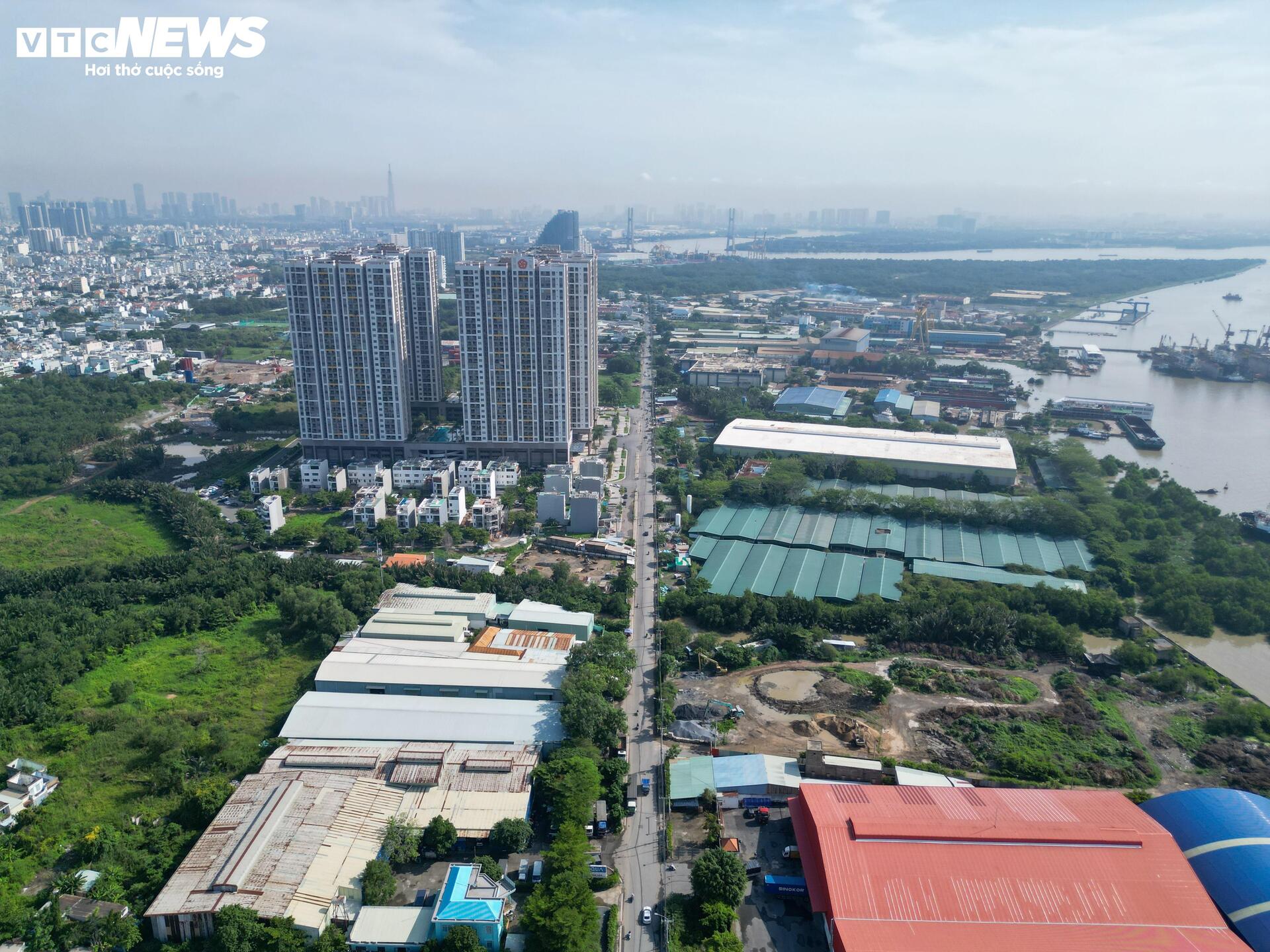
This is the first time Ho Chi Minh City has planned a multi-level transportation route with elevated sections, optimizing space, minimizing land clearance, and ensuring seamless travel along the entire route.
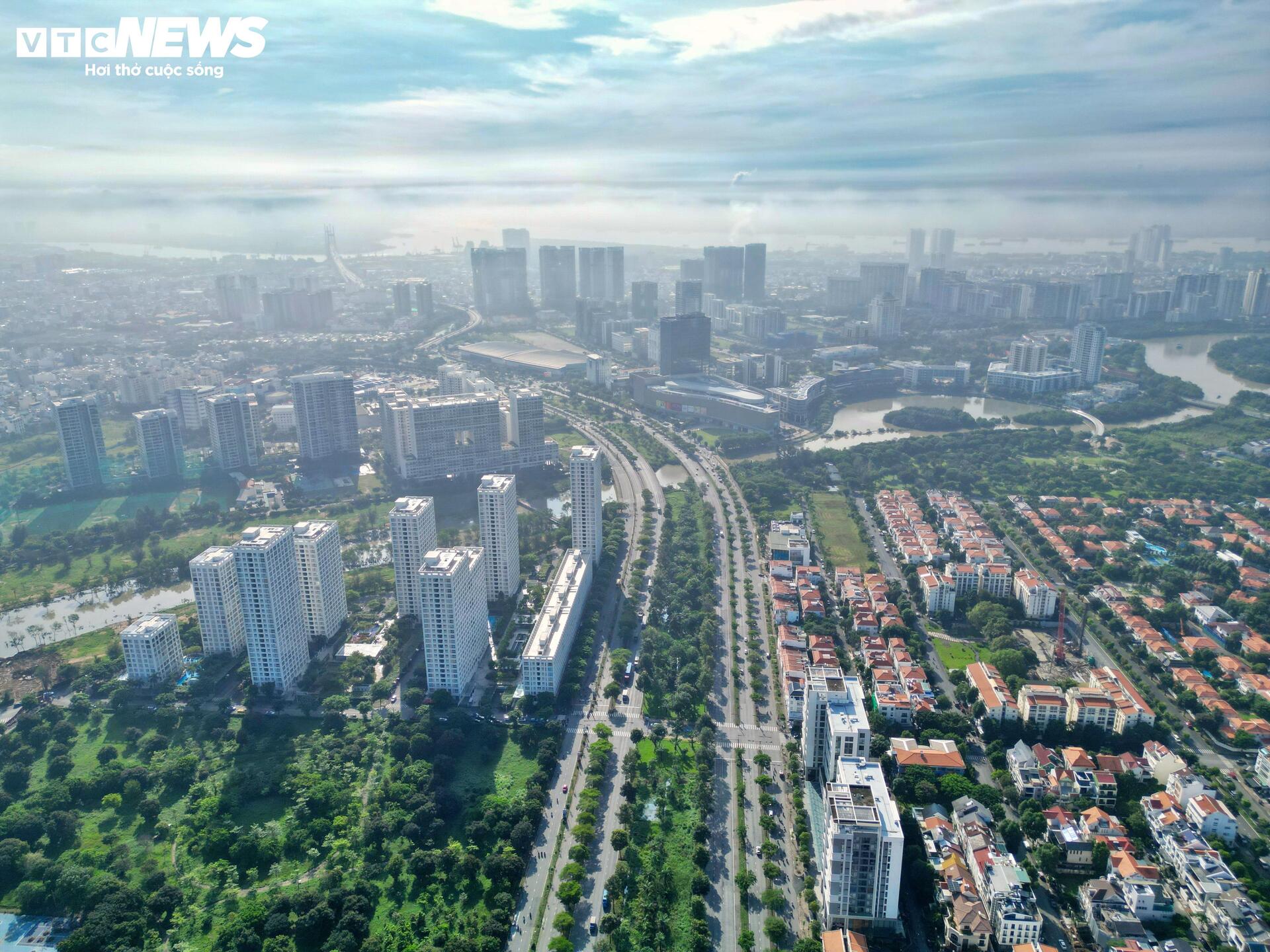
The Phu My 2 Bridge-Road project is also one of the ten high-speed routes (with minimal interruptions and intersections) approved by the Prime Minister in the integrated planning of Ho Chi Minh City for the period of 2021–2030, with a vision towards 2050. Upon completion, this route, along with elevated corridors such as Nguyen Huu Tho and 25C, will form a vital transportation artery, directly connecting Tan Son Nhat International Airport in Ho Chi Minh City with Long Thanh International Airport in Dong Nai.


As reported by VTC News journalists, the route commences in Phuoc Kien commune, Nha Be district, traversing through pristine landscapes featuring ponds, wild grasses, and intact natural ecosystems. The route is expected to continue across Rach Bang and Rach Dia, winding through existing residential areas along Hoang Quoc Viet Street before connecting to Dao Tri Street, crossing the Nha Be and Soai Rap rivers, and extending into Dong Nai province.
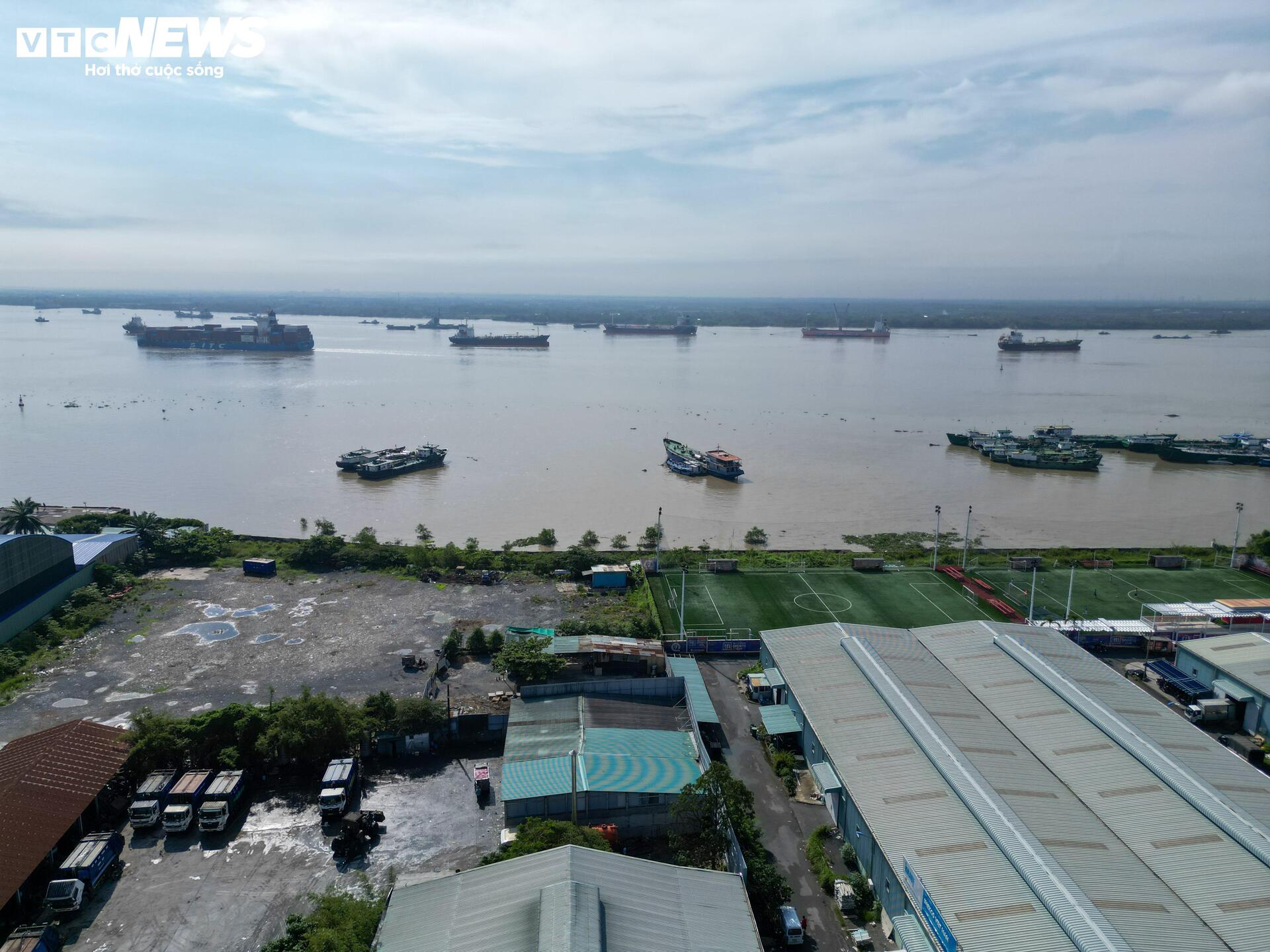
The image depicts the endpoint of the route before crossing the river, located at Dao Tri Street, adjacent to the Nha Be and Dong Nai rivers. The opposite bank belongs to Nhon Trach district in Dong Nai province.
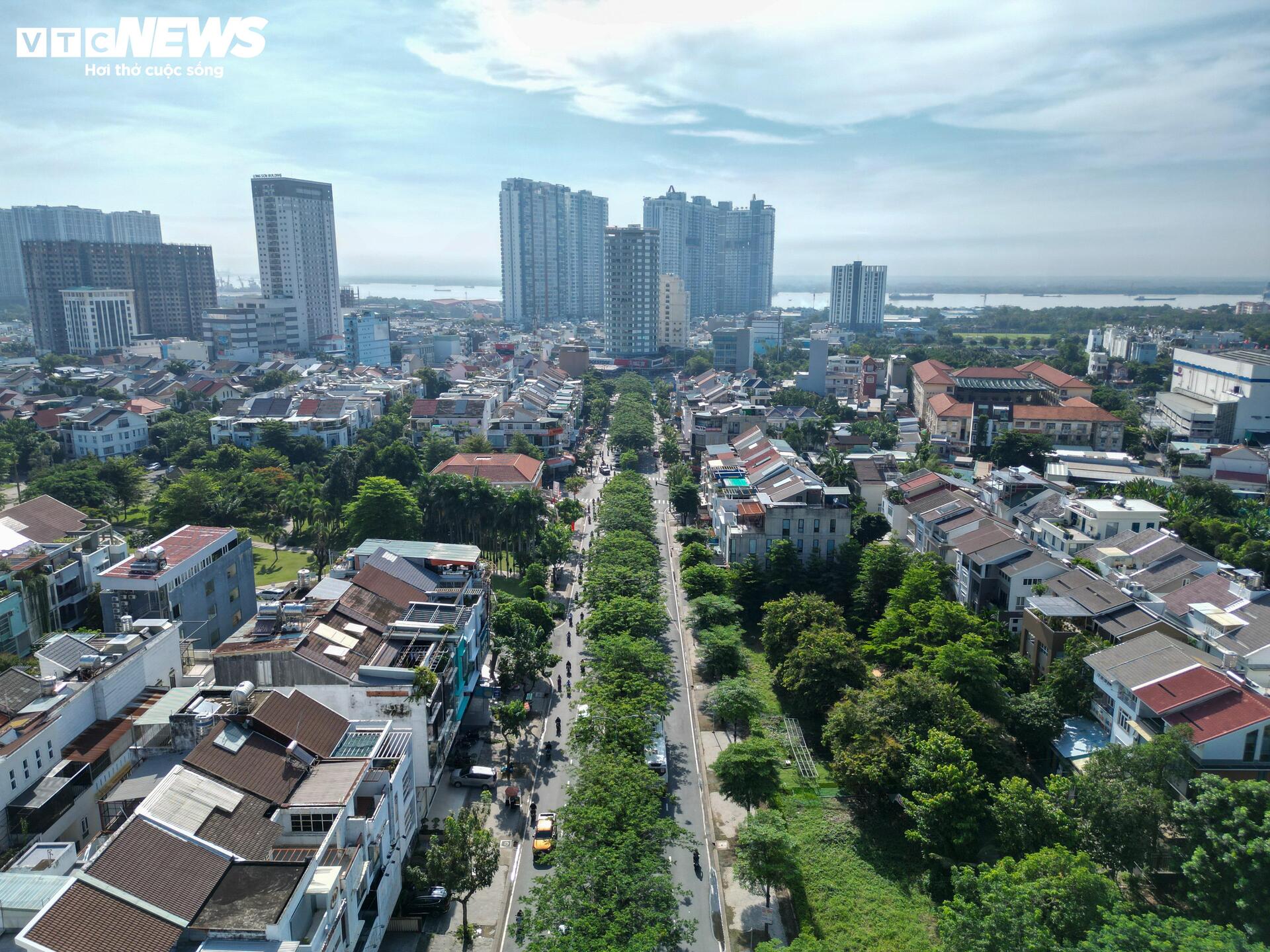
Observations reveal that the current state of transportation infrastructure in this area presents several challenges. Specifically, Hoang Quoc Viet Street, a crucial component of the project’s connectivity, is only about 15 meters wide at the beginning, narrowing to approximately 8 meters after the intersection with Huynh Tan Phat Street towards Dao Tri Street. This section often experiences congestion, particularly during peak hours or when large vehicles are in transit.

There is a pressing need to either expand the existing route or construct a new elevated corridor to ensure smooth traffic flow and maximize the connectivity potential of this region.
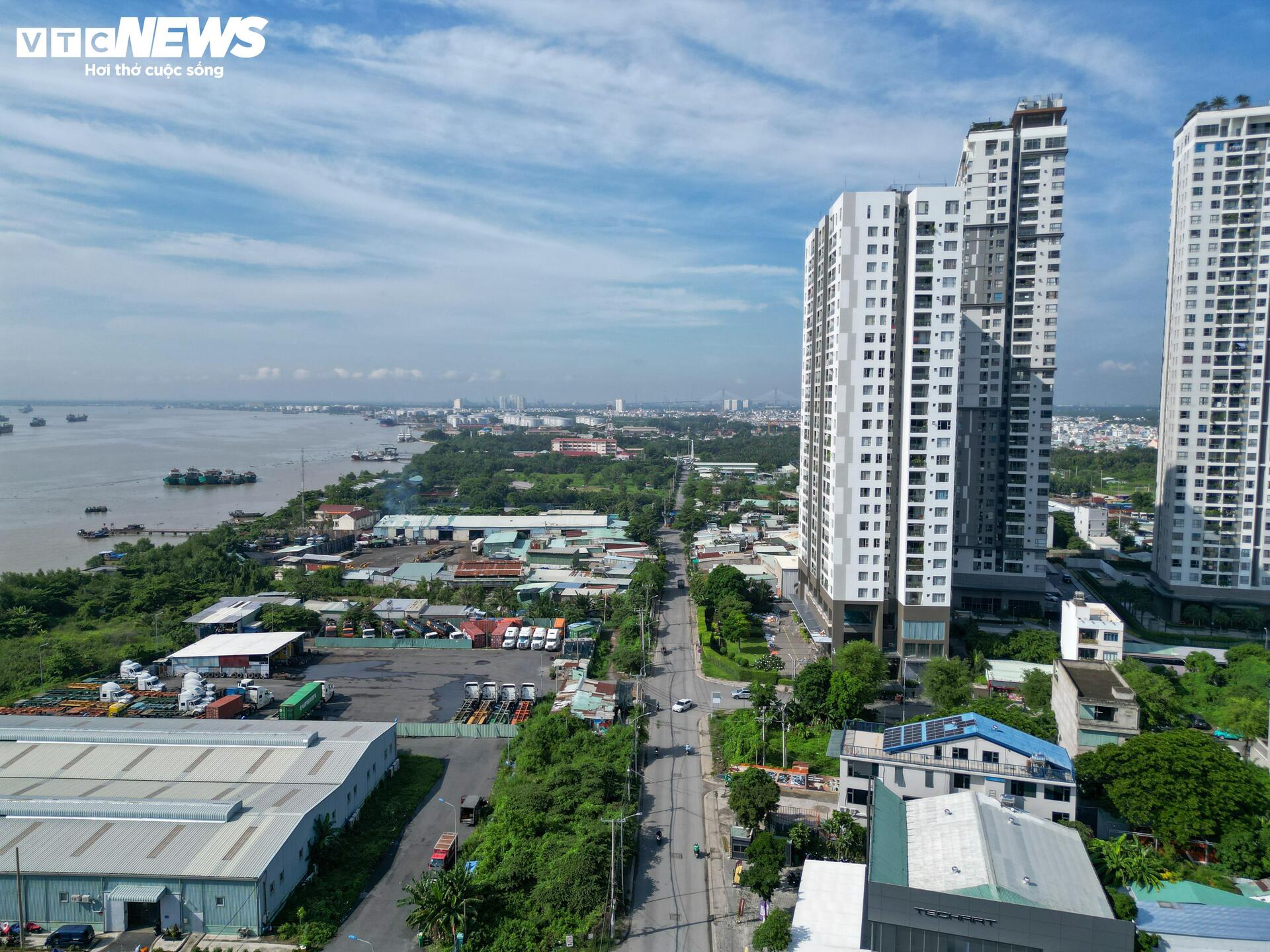
Once completed, the Phu My 2 route, in conjunction with elevated corridors such as Nguyen Huu Tho and 25C, will establish a vital transportation link between Tan Son Nhat and Long Thanh airports, connecting the two most important international aviation hubs in Southern Vietnam. The Ho Chi Minh City Department of Construction is collaborating with relevant units to conduct field surveys, study route options, and propose investment plans for submission to the People’s Committee for consideration in the near future.
Title: Is Thu Duc University Village the New Real Estate Hotspot in Eastern Ho Chi Minh City?
With its convenient location, affordable housing, and ever-expanding infrastructure, the area surrounding Thu Duc University Village is a real estate hotspot. This prime location offers easy connectivity, making it an attractive prospect for investors and parents seeking accommodation for their university-bound children. The continuous development of the area’s infrastructure further enhances its appeal, creating a thriving and desirable community.
“Highlands Coffee Introduces the ‘Drive-Thru’ Concept to Vietnam: A Convenient, Stay-in-Your-Car Experience.”
The “drive-thru” model is a convenient and efficient way of serving customers without requiring them to step out of their vehicles. With this innovative approach, customers simply drive up to the order station, place their orders, make payments, and collect their purchases, all from the comfort of their cars. This seamless process revolutionizes the way people experience on-the-go services, ensuring speed, ease, and convenience like never before.
The Powerhouse Portfolio: Unveiling the Might of Ho Chi Minh City’s Post-Merger Assets
The Ho Chi Minh City People’s Committee, post-merger, boasts over 20 powerhouse enterprises, leading industry giants spanning diverse sectors, with a combined asset value of an impressive 180,000 billion VND.
The Eastern Edge: Unveiling Ho Chi Minh City’s Gateway to Binh Duong
The first phase of the Ho Chi Minh City Ring Road 4 project in Binh Duong province is set to impress with its impressive scale and design. This stretch of the road will feature four lanes, plus a continuous emergency lane, and is engineered for a sleek driving experience with a designed velocity of 100 km/h.


























